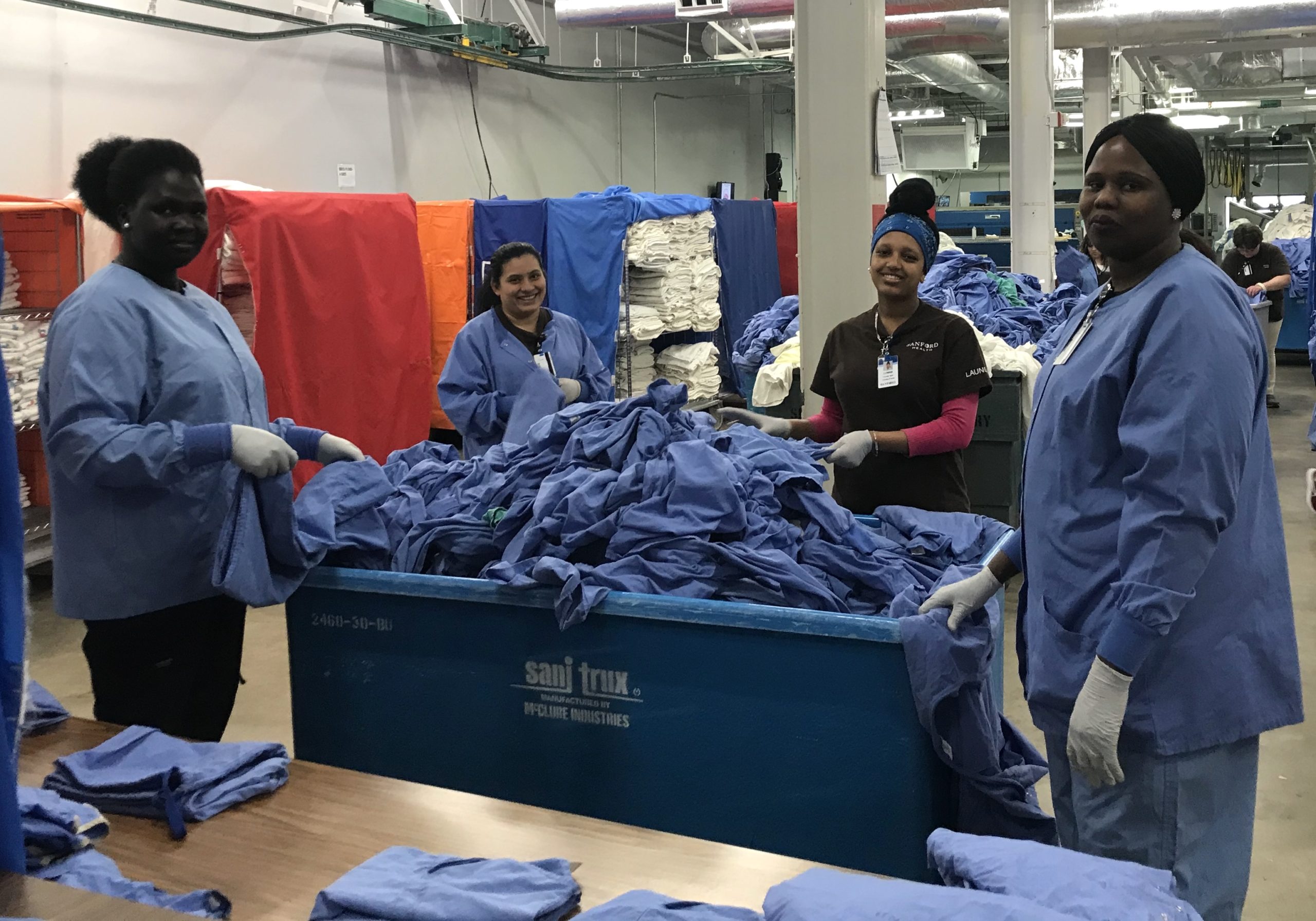The laundry services at Sanford Health don’t get a lot of downtime. It goes in, it comes out, and a cycle that never ends keeps rolling along.
While it may be underappreciated, it is nevertheless a crucial part of delivering effective health care.
And as impressive as the machines are that facilitate the giant amounts of laundry, it is ultimately the people who sort it coming in and then send it on its way that make the system work so well.
“We have people from around the world working for us,” said Brian Anderson, Sanford Health director of security and laundry in Sioux Falls, South Dakota. “There are eight languages spoken in the laundry room alone. We have some challenges with communications at times, but getting everyone on the same page is part of the fun.”
The multicultural environment has created a distinctive dynamic within the department.
“It’s an interesting part of it to have people from all over making up the laundry teams,” said Sanford Health laundry manager Braco Ivanic. “We’re from a lot of different places, but we all have the same goal.”
Laundry by the truckload
That goal is making sure an average of 25,000 pounds of laundry successfully goes through the system every day Monday through Friday.
Most of it is headed for a washer that is 10 feet wide and more than 50 feet long. This “tunnel washer” moves laundry through 12 washing sections in 130-pound increments.
“It’s the same size as if you took 12 single big washers together,” Ivanic said. “It’s a huge operation, and it can wash a huge amount per hour.”
Precautions come with the job. Those who handle the laundry coming in wear heavy gloves and gowns. In addition, the process of loading the washer is configured to minimize handling. Signs reminding people to wash their hands are evidence of the presence of the coronavirus in the community, but the safeguards built into the system are part of every day.
“Whether we’re dealing with this current situation or not, our people have to be protected,” Ivanic said. “It hasn’t changed much for us.”
Another way of saying that nothing has changed would be to say it’s always busy.
“People might think it’s a little room with three people folding towels,” Ivanic said. “But for the people who visit and see this place, it’s, ‘Oh, my goodness, I never imagined this.’ It’s a huge room, and we have 40 people working. When you think about it, there’s not any part of the health system that is not using laundry.”
So how much is 25,000 pounds of laundry?
“It’s difficult to describe, but I’d say if you looked at the pile of snow the city drops off down by Morrell’s (now Smithfield Foods), it would be about that big,” Ivanic said. “It’s a lot, and it comes all day long through the laundry chutes to our sort room.”
In-house system
The department is responsible for 135 different laundry items on a weekly basis, so the sorting that takes place before washing is an important part of the process that contributes to the efficiency of the operation.
From the washer, the laundry goes directly into the drying system. It is not handled again by human hands until it’s time to be returned.
The department in Sioux Falls serves 80 locations off-campus in South Dakota, Iowa and Minnesota and 154 locations overall. Drivers put more than 1,500 miles on the two Sanford Health trucks per week hauling the laundry.
More and more hospital systems send the laundry out to third parties to be cleaned. As hospitals have expanded over the years, the laundry area is often repurposed.
Sanford continues to maintain its own team, however. It is a much better way to get clean bed linens, scrubs, towels and more back to where they need to be because it also gives the department the capacity to respond to unique circumstances.
“Everybody is involved in getting everyone through this,” Ivanic said. “We’re so grateful for those on the front lines who are providing the first contact and helping first. That’s who we’re all trying to help. That’s what we do every day. Our business is to support our departments.”
Learn more
…
Posted In COVID-19, Nonclinical Support Services, Sanford Stories
